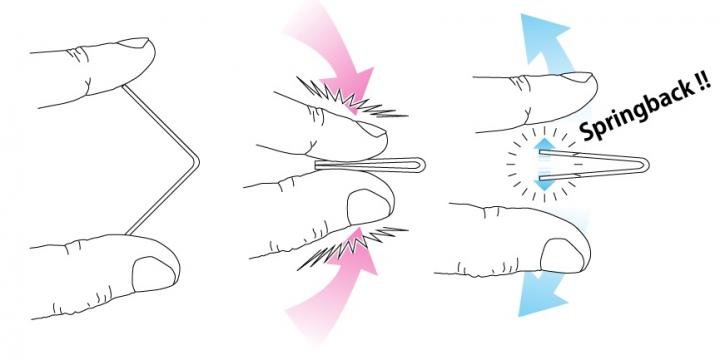Remember in Craft, Design and Technology, centuries ago when they still taught it in school, at some point you would be folding a thin piece of sheet steel back on itself for one reason or another? Now, remember how it would never stay flat? The metal would always force its way into a V-shape, no matter how hard you pressed or how long you held it closed. If you don’t remember or didn’t take CDT, try it now with a paperclip. Go on, we’ll wait… See? Good.
The phenomenon you experienced is known in engineering circles as ‘springback’ and is simply a last gasp attempt by the metal to return to its original shape. As you can imagine, though, irksome as this may be to a fourteen-year-old potential engineer, it’s a rather larger problem for those attempting to build today’s modern trappings and technologies out of high strength steel. Given the effort it takes to bend HSS, and the fact that this bending results in rather a lot of springback, it’s about time somebody came up with a solution.
Dr. Komgrit Lawanwong and his department at Hiroshima University have developed some clever and subtle refinements to the HSS metal forming process which should help remove the tendency for defects in pressed high strength metals.
‘The problems become particularly acute when high-strength materials are used,’ says Dr. Komgrit. ‘So a new technique to eliminate springback is urgently needed in the stamping industry.’
He goes on to explain that in order to make a correct U-shaped channel, the bending process needs to be able to create a sharp corner bend, a flat bottom, and a precise bending angle with no springback. To this end, Dr. Komgrit has inserted an extra element into the familiar bending process, and it was tested on some 980Y steel, along with another piece bent the traditional way.
The Hiroshima system involves clamping a sheet between a punch and a counter punch, U-bending it while maintaining constant clamping force, pushing up of the bottom section of the U-bend with a counter punch, and then removing the sheet from the clamps. The use of a counterpunch is the addition to the process.

When compared with the traditionally bent HSS, Dr. Komgrit’s steel suffered almost no springback and the bottom remained flat, while the other piece showed pronounced curving along the lower part of the U-bend and a considerable amount of the dreaded springback.
The expanding use of HSS in various industries is becoming more necessary every day: new and more advanced construction technics require lightweight, high strength components; the automotive and aviation fields are constantly searching for lighter and stronger materials that can offer good protection and use the minimum of fuels, in order to lessen environmental impact and carbon dioxide emissions; and the list goes on. Fortunately, Dr. Komgrit’s work in the industry should go a long way towards making HSS more successful in these applications for everyone.

